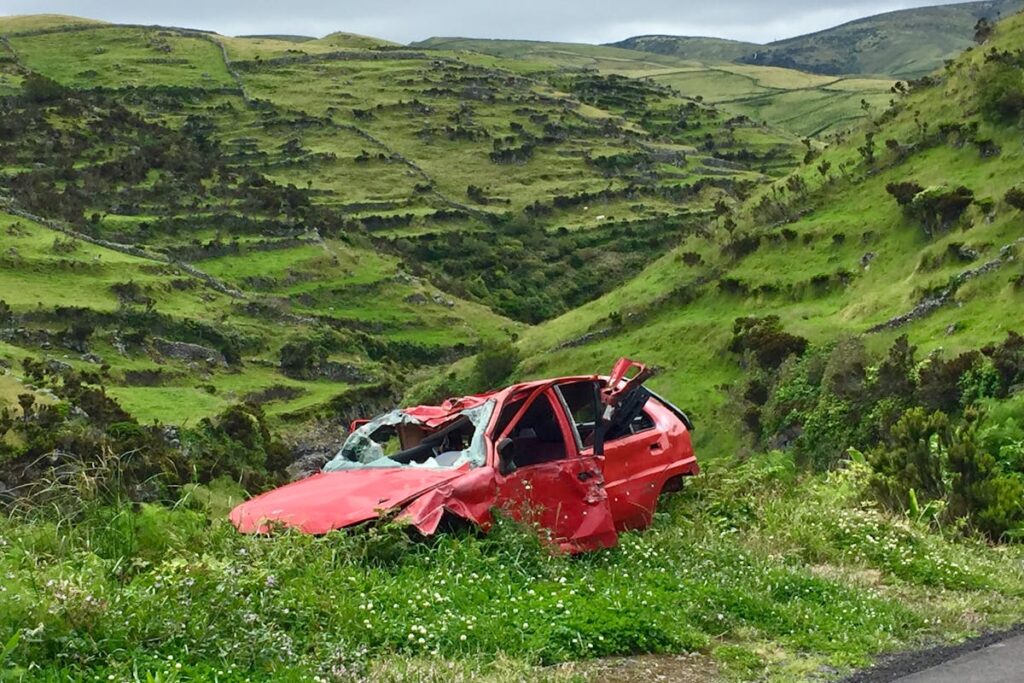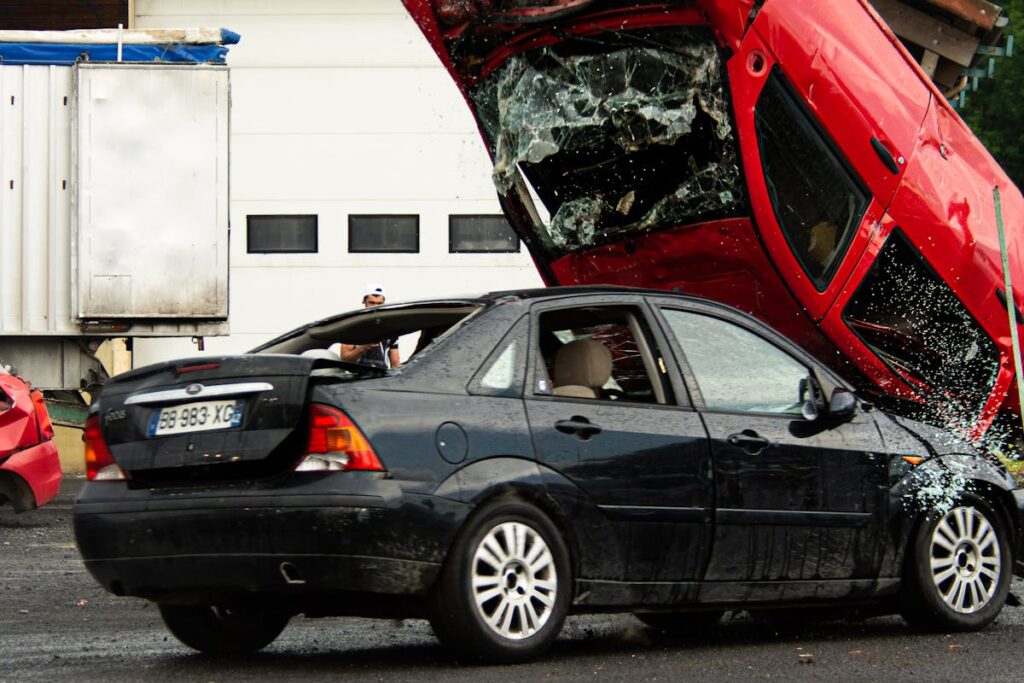Determining fault in car accidents requires an intricate examination of multiple variables, including adherence to traffic laws, the reliability of eyewitness testimonies, and the influence of weather on driving conditions. Objective evidence from police reports, complemented by vehicle damage assessments, further assists in painting a clearer picture. Furthermore, the legal frameworks of comparative and contributory negligence shape the outcome considerably. Analyzing these elements collectively reveals the complexities surrounding fault attribution in vehicular collisions.
The Role of Traffic Laws in Fault Determination
Traffic laws serve as a fundamental framework for determining fault in car accidents, providing clear guidelines and expectations for driver behavior. These regulations are meticulously crafted to outline the rules of the road, stipulating what constitutes safe and lawful driving. In the context of fault allocation, adherence to or violation of traffic regulations plays a pivotal role. For instance, if a driver runs a red light, the breach of this specific law helps in attributing fault to the offending party. Analyzing the situation against the backdrop of established traffic rules allows for an objective assessment of driver actions. Consequently, traffic laws not only guide daily driving conduct but also serve as critical tools in the systematic determination of fault in vehicular incidents.
The Importance of Eyewitness Testimonies
How do eyewitness testimonies contribute to determining fault in car accidents? Eyewitness testimonies offer vital insights that can corroborate or contradict other evidence, impacting fault determination. The reliability of these testimonies depends on the witness’s ability to observe the incident accurately and recall details without bias. Factors affecting eyewitness reliability include the witness’s vantage point, duration of observation, and environmental distractions. Testimonial consistency is equally important, as discrepancies in repeated accounts may undermine credibility. Consistent testimonies can strengthen a case by providing a cohesive narrative that aligns with physical evidence. However, the subjective nature of human perception and memory can introduce variability, necessitating careful assessment. Legal professionals weigh these testimonies against objective evidence to construct a thorough understanding of the accident.
How Weather Conditions Affect Fault Analysis
Weather conditions considerably impact the analysis of fault in car accidents, primarily through their effects on visibility and road conditions. Reduced visibility due to fog, rain, or snow can impair a driver’s ability to react appropriately, potentially influencing their decision-making and subsequent liability. Additionally, adverse road conditions such as ice or standing water can shift the assessment of responsibility, as they may directly contribute to the inability to maintain control of a vehicle.
Visibility Impacts Driver Decisions
When evaluating fault in car accidents, visibility plays an essential role in influencing driver decisions, particularly under varying weather conditions. Reduced visibility can stem from factors such as nighttime conditions and adverse weather, including fog, rain, or snow. Nighttime visibility inherently limits a driver’s ability to perceive road hazards and other vehicles, potentially increasing the likelihood of misjudgment. Weather visibility further complicates this issue, as precipitation and fog obscure sightlines, requiring drivers to adjust speed and following distances appropriately. Failure to accommodate these conditions may be considered negligent behavior in fault analysis. Investigators often assess whether a driver adhered to safety protocols, such as using headlights and reducing speed, to determine if their actions contributed to the accident under compromised visibility circumstances.
Road Conditions Influence Responsibility
While road conditions greatly influence the determination of fault in car accidents, weather conditions play a critical role in shaping these road environments. Rain, snow, and ice can alter the road surface, reducing tire traction and increasing the likelihood of collisions. In such scenarios, the condition of the road surface becomes a significant factor in evaluating fault. Drivers are expected to adjust their driving behavior in response to compromised traction, such as reducing speed and maintaining a greater following distance. Failure to adapt to these conditions may indicate negligence. Additionally, authorities may examine whether road maintenance was adequate, considering factors like timely snow removal or proper drainage systems. Consequently, the interplay between weather conditions and road surface characteristics is pivotal in fault analysis.

The Impact of Vehicle Damage Assessments
Vehicle damage assessments play an essential role in fault determination by providing objective data on the nature and extent of collisions. Evaluating collision impact involves measuring the force and direction of impact, while analyzing damage consistency checks for alignment between the physical damage and the reported circumstances of the accident. This analysis aids in establishing a factual basis for assigning liability by correlating damage patterns with the sequence of events.
Evaluating Collision Impact
Accurate vehicle damage assessments play an essential role in evaluating the collision impact during car accidents. Through meticulous collision analysis, experts can determine the severity and direction of forces involved. Impact assessment allows for a thorough understanding of how vehicle structures absorb and distribute energy during a crash. This process involves examining damage patterns, the extent of deformation, and the alignment of impacted areas. By systematically evaluating these factors, experts can infer the underlying dynamics of the collision, which is vital for determining fault. Additionally, advanced techniques such as computer simulations and crash reconstruction further augment traditional methods. Therefore, precise vehicle damage evaluations not only aid in understanding the immediate effects of an accident but also contribute to improving vehicle safety standards.
Analyzing Damage Consistency
The evaluation of damage consistency in car accidents serves as an essential component in vehicle damage assessments, offering insights into the correlation between reported collision dynamics and the physical evidence present. By examining damage patterns, investigators are able to ascertain whether the physical evidence aligns with the accounts provided by those involved. Impact analysis plays a significant role in this process, allowing for a systematic review of the forces at play during the collision. This involves evaluating the direction, location, and extent of the damage on each vehicle. Such analysis aids experts in reconstructing the event sequence, providing clarity on the mechanics of the accident. Ultimately, consistent damage assessments are critical in determining fault, as they substantiate or contradict the claims made by the parties involved.
Understanding Comparative and Contributory Negligence
How does one determine fault in the complex landscape of car accidents? The legal frameworks of comparative negligence and contributory negligence play essential roles. Comparative negligence allows for fault to be apportioned among involved parties based on their level of responsibility. This means a victim can still recover damages even if partially at fault, although their compensation is reduced by their percentage of fault. In contrast, contributory negligence is more stringent, barring any recovery if the victim is found even minimally at fault. These doctrines vary by jurisdiction, influencing how accident liability is assessed. Understanding these concepts is vital for determining liability and potential compensation in car accidents, as they directly affect the legal outcomes and financial repercussions for those involved.
The Role of Police Reports in Identifying Fault
A police report serves as an essential document in the process of determining fault in car accidents. Compiled by police authority, these reports provide an official account that is critical for legal and insurance purposes. The report often contains details about the parties involved, witness statements, and environmental conditions at the time of the accident. The accuracy of the report is paramount, as it influences the determination of fault. Officers may include diagrams, photographs, and their professional assessments, which contribute to a thorough understanding of the incident. The objective nature of police reports lends them significant weight in fault determination, though they are not always definitive. Accurate reporting by police authority guarantees that the report serves as a reliable resource in adjudicating liability.
The Influence of Insurance Companies in Fault Decisions
While police reports play an important role in documenting the circumstances surrounding car accidents, insurance companies frequently wield considerable influence in the ultimate determination of fault. This influence stems from their involvement in processing insurance claims, where adjusters play a critical role. Adjusters analyze reports, assess damages, and interpret policy details to establish liability. Their expertise and discretion can greatly sway fault determinations, impacting the outcome of claims. Furthermore, insurance companies often have their own guidelines and criteria, which may differ from legal standards, to evaluate fault. These internal assessments can affect how claims are settled and the financial responsibilities of the parties involved. Consequently, the adjuster influence within insurance companies is a pivotal factor in the fault determination process.
How Fault Is Determined Across Different Jurisdictions
Determining fault in car accidents varies considerably across jurisdictions, influenced by local laws and regulations. Jurisdiction variations in fault assessments can result in differing outcomes for similar accident scenarios. In some regions, the determination may rely heavily on comparative negligence, where fault is distributed among parties based on their degree of responsibility. Others may use a contributory negligence approach, allowing for one party to be deemed entirely at fault if they contributed to the accident in any measure. Additionally, some jurisdictions embrace no-fault systems, which aim to reduce litigation by allowing parties to recover damages from their insurers regardless of fault. Each jurisdiction’s approach reflects its legislative priorities, emphasizing either fairness in fault distribution or efficiency in processing claims.
Legal Implications of Fault in Car Accidents
Understanding the various approaches to fault determination in car accidents is integral to comprehending their subsequent legal implications. Legal precedents play a significant role, as they establish frameworks for adjudicating responsibility. Fault percentages, often derived from these precedents, influence both civil liability and insurance claims. In jurisdictions where comparative negligence applies, fault percentages directly affect compensation awards. For instance, a plaintiff deemed 30% responsible may see their damages reduced proportionately. Conversely, under contributory negligence, any degree of fault could bar recovery entirely. Additionally, the determination of fault influences insurance premiums and coverage liabilities. Understanding these implications requires a nuanced grasp of statutory laws and case law histories to appreciate how fault determination impacts both individual litigants and broader legal systems.
Frequently Asked Questions
Can Advanced Vehicle Technology Help in Determining Fault?
Advanced vehicle technology greatly aids in fault determination by using collision data and sensor technology. Sensors provide real-time data on speed, direction, and impact, allowing for precise analysis of accident circumstances, thereby facilitating accurate fault attribution.
How Do Personal Injuries Impact Fault Determination?
The determination of fault can be influenced by injury severity, as it may highlight the extent of negligence. Analyzing personal injuries helps in evaluating negligence, providing essential evidence in understanding the circumstances and responsibility in an incident.
What Role Do Traffic Cameras Play in Assessing Fault?
Traffic cameras provide essential traffic footage that can be analyzed to determine fault. The reliability of camera footage depends on factors like resolution and angle. Analysts evaluate these elements to guarantee accurate interpretations in fault assessment.
Can Pre-Existing Vehicle Modifications Affect Fault Analysis?
Pre-existing vehicle modifications can greatly impact fault analysis by altering vehicle safety standards. Analysts must consider modification impact, as certain alterations may compromise safety features, potentially shifting or clarifying liability in accident evaluations. Objective assessment is essential.
How Is Fault Determined in Multi-Vehicle Accidents?
Fault determination in multi-vehicle accidents involves analyzing witness statements and conducting accident reconstruction. These methods provide an objective assessment by examining vehicle positions, impact angles, and driver actions to establish a clear sequence of events and responsibilities.

